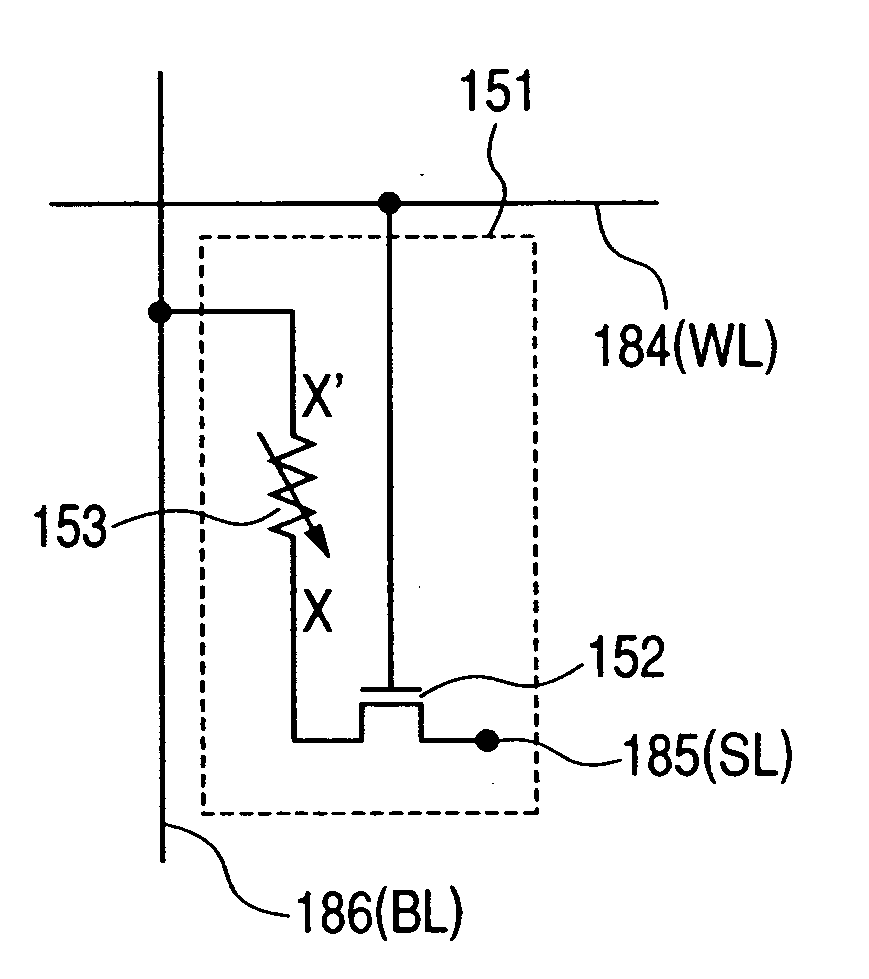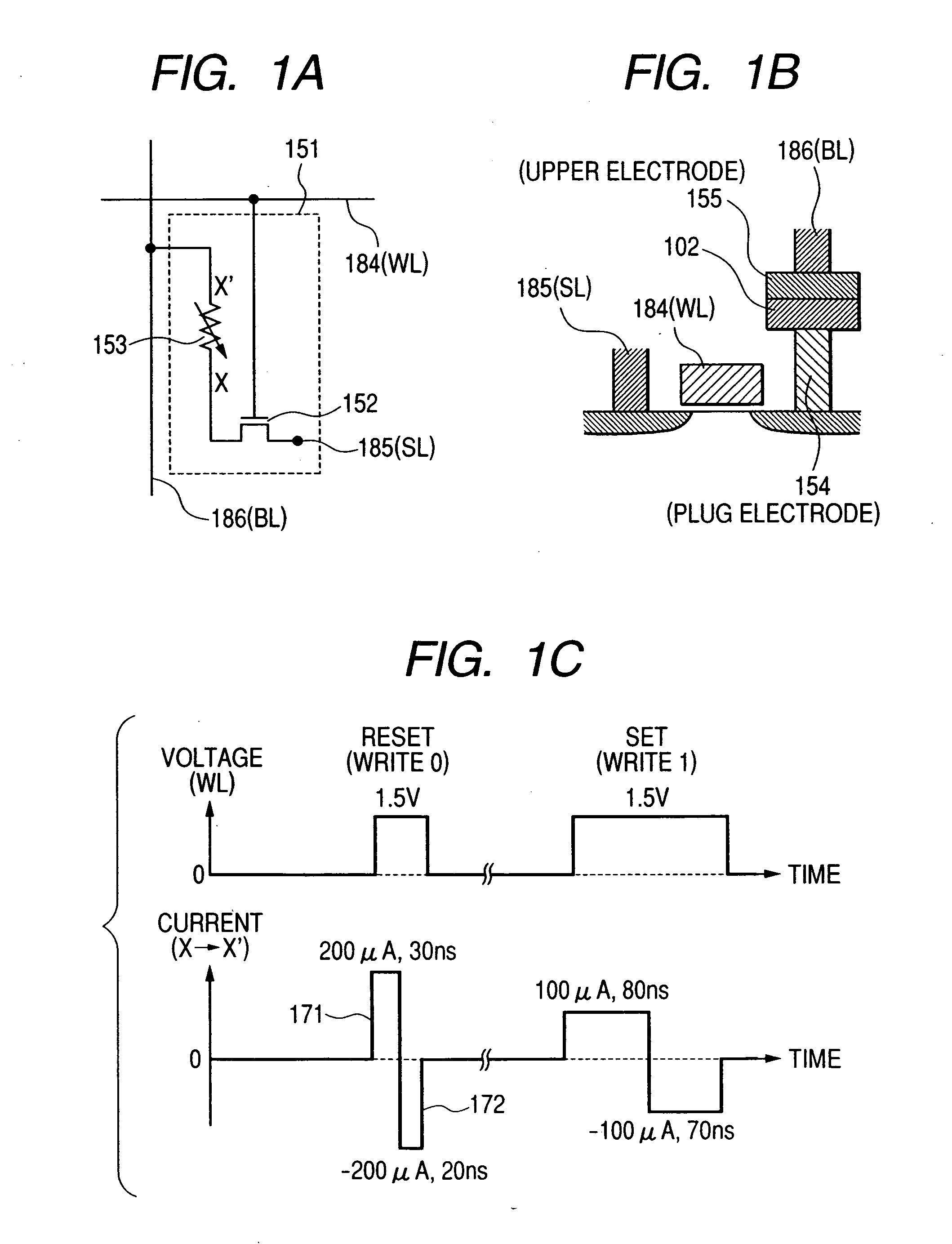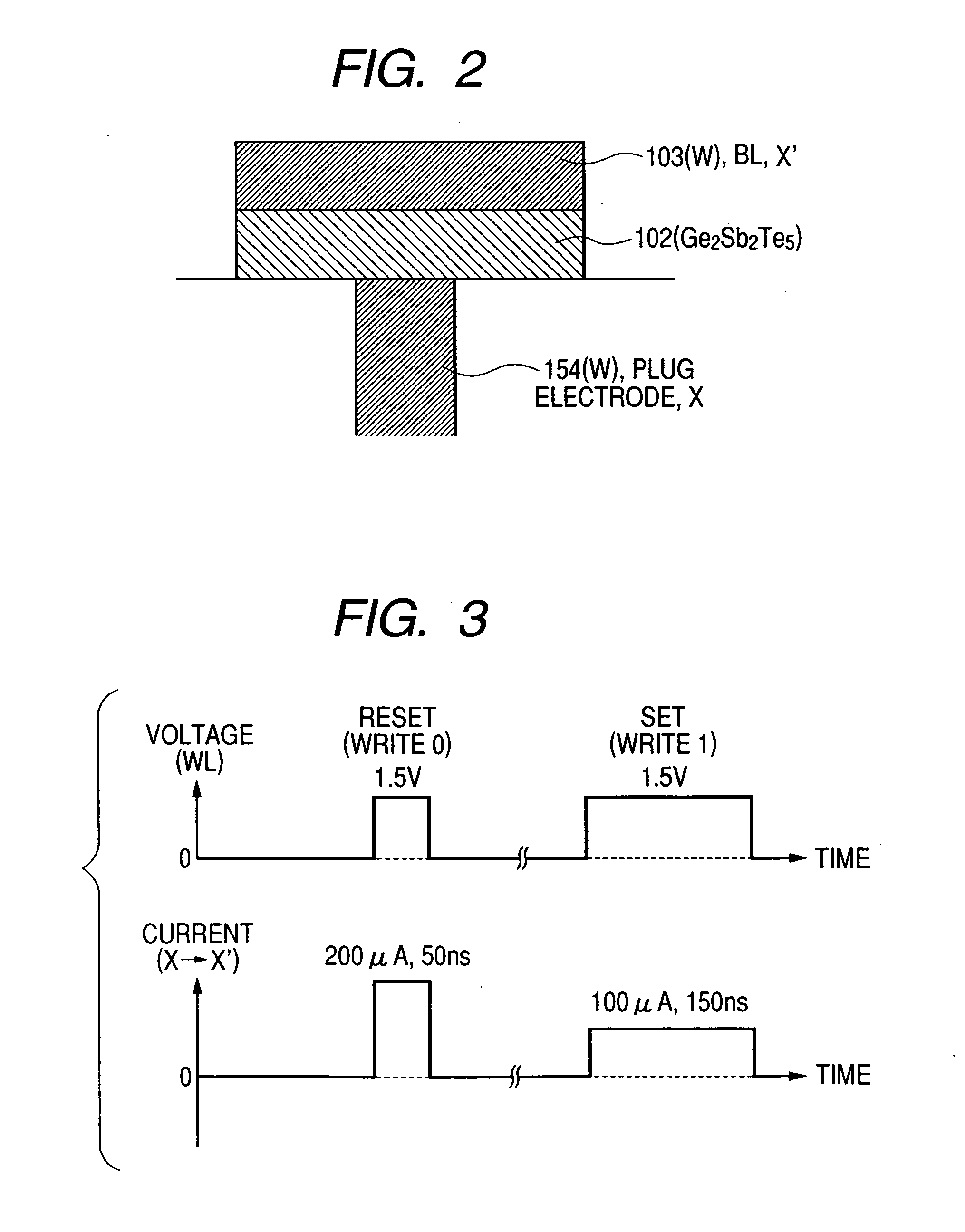Semiconductor integrated device
a technology of integrated circuits and semiconductors, applied in the direction of information storage, static storage, digital storage, etc., can solve the problems of difficult discrimination between storage information between 0 and 1 and achieve the effect of high reliability, high reliability, and high functionality of personal computers
- Summary
- Abstract
- Description
- Claims
- Application Information
AI Technical Summary
Benefits of technology
Problems solved by technology
Method used
Image
Examples
first embodiment
[0052]FIG. 1 and FIGS. 6 to 10 show the semiconductor memory cells and their operational wave forms of the first embodiment of the present invention.
[0053]FIG. 1A shows a memory cell 151 comprising a select element 152 and an information storage section 153. The information storage section 153 has a structure connected to a MOS transistor, i.e., a select element 152, and a source line 185. Of course, another structure is possible, wherein the information storage element is connected to a select element 152 and a bit line 186. In such cases, a current flows from either the bit line 186 or the source linel85 by applying a voltage pulse to the word line 184, to make the select element conductive. FIG. 1B shows a schematic diagram of the memory cell cross-section. The structure of the information storage section 153 is such that a chalcogenide 102 is sandwiched between an upper electrode 155 having a comparatively large contact area with the chalcogenide and a plug electrode 154 having...
second embodiment
[0074] The segregation in the composition of the chalcogenide can be prevented by the present invention disclosed. The chalcogenide, which has been unable to be used since the segregation was easily produced in the prior art, is now available. A criterion for segregation production is a difference in electronegativity between atomic elements composing the storage materials. The composition of the chalcogenide studied mainly as a material for a phase change storage memory is Ge—Sb—Te. As shown in a table in FIG. 12, the electron negativity for Ge is 1.8, for Sb 1.9, and for Te 2.2. Therefore, since a Te element is a relatively negative, it drifts toward the positive electrode. For the electronegativity of the three kinds of element, Ge—Sb—Te, Ge has the minimum value, Te has the maximum, and the difference between the two is 0.3.
[0075] For the chalcogenide with the difference in electronegativity of larger than 0.3 between its composing elements, there was a problem the segregation ...
third embodiment
[0078]FIG. 13 shows a schematic cross sectional view of a storage section of the memory cell according to fourth embodiment of the present invention. An bonding layer 192, a heater layer 193, and the chalcogenide are sandwiched between the electrode 195 and the electrode 196. Here, the bonding layer 192 is arranged not to produce any space between the chalcogenide and the electrode 195 at a memory fabrication process or at the memory operations. The heater layer is arranged to produce joule heat efficiently when the write current flows. With such a structure, since composing atoms from the heater layer or the bonding layer diffuse into the chalcogenide, that the materials with a large diffusion velocity could not be utilized as the heater layer or the bonding layer. However, by the present system of switching the direction of the current, such elements with a large diffusion velocity as Si and C, which could not be used in the prior art, become available to be used for a heater laye...
PUM
 Login to View More
Login to View More Abstract
Description
Claims
Application Information
 Login to View More
Login to View More - R&D
- Intellectual Property
- Life Sciences
- Materials
- Tech Scout
- Unparalleled Data Quality
- Higher Quality Content
- 60% Fewer Hallucinations
Browse by: Latest US Patents, China's latest patents, Technical Efficacy Thesaurus, Application Domain, Technology Topic, Popular Technical Reports.
© 2025 PatSnap. All rights reserved.Legal|Privacy policy|Modern Slavery Act Transparency Statement|Sitemap|About US| Contact US: help@patsnap.com



